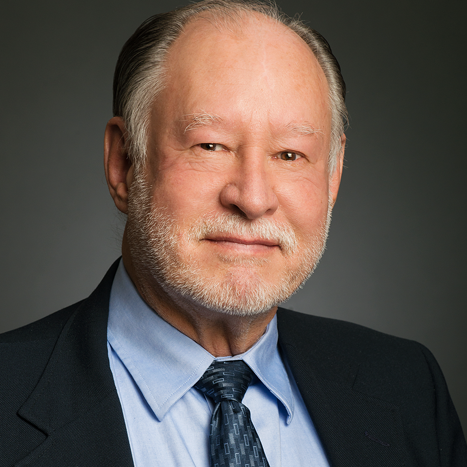Perspective: The Impact of Federal Support Program Funding by Type of Health Care Provider
April 01, 2022
George Miller
Ani Turner
The most recent Centers for Medicare & Medicaid Services (CMS) estimates of National Health Expenditures (NHE) for 2020 reported the distribution of significant federal funds to support the health care response to the COVID-19 pandemic and to mitigate the pandemic’s economic impact on the health sector. Two federal programs were identified as the principal conduits for these funds: the Paycheck Protection Program (PPP) and the Provider Relief Fund (PRF). The NHE estimates identify this additional federal support funding by setting of care, but do not break out such funding by program type. Since these two programs differ significantly in focus, scope, and implementation, an understanding of how each program’s dollars impacted the various types of health care providers may be useful in informing federal responses to future such crises. In this paper, we use publicly reported data on the distribution of funds in 2020 under the PPP and PRF, combined with estimates of total federal support funds by setting from the NHE, to estimate where the dollars distributed under each program went by health care setting and to examine the degree to which each program was important to the financial stability of each setting.
Overview of funds to health care through the PPP and PRF
The PPP consisted of loans to help small businesses (i.e., businesses with fewer than 500 employees) retain their workforce in the face of the pandemic-induced recession. Although not designed specifically to help health care providers, many providers received PPP loans. CMS estimated that health care providers received $53.3 billion in PPP funds in 2020. Because essentially all of these loans were ultimately forgiven, they became revenue to the receiving entities and were treated as expenditures by CMS. We used PPP data from the U.S. Small Business Administration to allocate the $53.3 billion to providers in the seven service categories that received these funds: hospital care; physician and clinical services; dental services; other professional services; nursing home and residential care; home health care; and other health, residential and personal care.
The PRF consists of payments to eligible health care providers within these same seven service categories. CMS estimated that $121.6 billion in federal government support was distributed through this fund in 2020. We estimated the CMS allocation of these funds among the seven health care service categories by subtracting the PPP allocations from the total allocations reported by CMS, which consisted of PPP plus PRF plus a small amount from other federal programs.
Which settings saw the largest share of 2020 revenues from the PPP and PRF?
In Exhibit 1, we show the percentage of total spending in each of the seven NHE settings of care that came from the PPP and PRF programs, and from both combined. Overall, the share of expenditures attributable to the combination of these programs was fairly similar across settings of care. The share was highest for nursing homes, at 10.2% of 2020 spending. The share was smallest in other health, residential, and personal care, which consists primarily of services provided in non-traditional settings (e.g., schools, worksites, and senior citizens centers) and ambulance services. This category seems to have been less hard hit by the pandemic than most of the other categories and received funds representing less than 2% of spending in that category.
Hospitals saw 6.7% of spending in 2020 from the combination of these two programs, comparable to the share seen in ambulatory care settings, which ranged from 5.4% of spending for physician and clinical services to 7.9% of spending in home health care.
Exhibit 1. Percent of Total Expenditures by Spending Category Consisting of PPP and PRF Funds

Which program was most important to each setting?
Exhibit 2 displays the percent split in funds received between these two programs for each of the seven settings of care, showing that while the overall share of spending was similar across settings of care, the source of funding varied considerably. Hospitals received nearly all of their government support funding (96%) from the PRF, while dental services received nearly all of their funding (94%) from the PPP. Physician and clinical services and home health care providers received closer to equal proportions of funding from the two programs. Across all settings of care, more than two-thirds of government funding was distributed through the PRF, not surprising given this fund was targeted specifically to health care.
Exhibit 2. Sources of Total Government Funding by Spending Category

Where did funds from each program go across the health sector?
Exhibit 3 shows, for each of the two government programs, how the funds were allocated across settings of care. Roughly two-thirds of PPP spending went to professional services (physician, dental, and other), while less than 7% went to hospitals, in spite of the fact hospitals represent the largest component of NHE. Recall, however, that PPP loans were earmarked for small businesses with fewer than 500 employees, meaning that most hospitals would not qualify for PPP support. Conversely, hospitals received nearly two-thirds of PRF expenditures. The much smaller shares of funds from the PRF program for other spending categories (especially dental services) reflects the rules that were used to distribute these funds, with the majority of funds earmarked for hospitals and smaller portions allocated to other provider types, including a very small portion for dental services.
Exhibit 3. Distribution of PPP and PRF Funds Among Spending Categories

Conclusion
The combined impact of the PPP and PRF programs offered a similar level of support for various types of health care providers. Except for the “other health, residential, and personal health” category, the total federal contribution by spending category in 2020 varied from 5.4% to 10.2% of category expenditures. The more broadly targeted PPP program played an important role in funding providers in office settings and was especially critical to the financial stability of dental practices. In contrast, the PPP provided less than 7% of the funds received by hospitals, where the PRF was the program funding the majority of financial support. As we describe in more detail in a previous post on 2020 health spending, funds from the combination of these federal programs turned the financial outcome for most health services categories from revenue losses in 2020 to revenue gains, helping to ensure a robust medical response to the COVID-19 pandemic and supporting the financial viability of providers across the range of health care settings.
Altarum is a nonprofit organization that works with federal and state agencies and foundations to design and implement solutions to improve the health of individuals with fewer financial resources and populations disenfranchised by the health care system. We achieve measurable results by combining our expertise in public health and health care delivery with technology, workforce training and continuing education, applied research, and technical assistance. Our innovative solutions lead to better health for beneficiaries and better value for payers.

Perspective

George Miller - PhD, BSE, MSE
Fellow and Research Team Leader
Areas of Expertise- Value of Health
- Low-Value Care
- Health Economics
Dr. George Miller is a fellow participating in Altarum's efforts to track national spending, analyze the drivers of spending growth, and quantify a sustainable spending growth rate. Dr. Miller received his BSE, MSE, and PhD degrees in industrial and operations engineering from the University of Michigan, where he subsequently served as an adjunct assistant professor.

Ani Turner - MA
Program Director, Health Economics and Policy
Areas of Expertise- Health Spending
- Health Equity
- Health Workforce
With over 30 years of experience working with government, commercial, and philanthropic clients, Ani leads Altarum research and policy analyses in areas such as health spending and workforce and the economic impacts of investments in improving health and advancing racial equity. Ani holds a bachelor’s degree in mathematics and a master’s degree in applied economics with a concentration in labor economics, both from the University of Michigan.